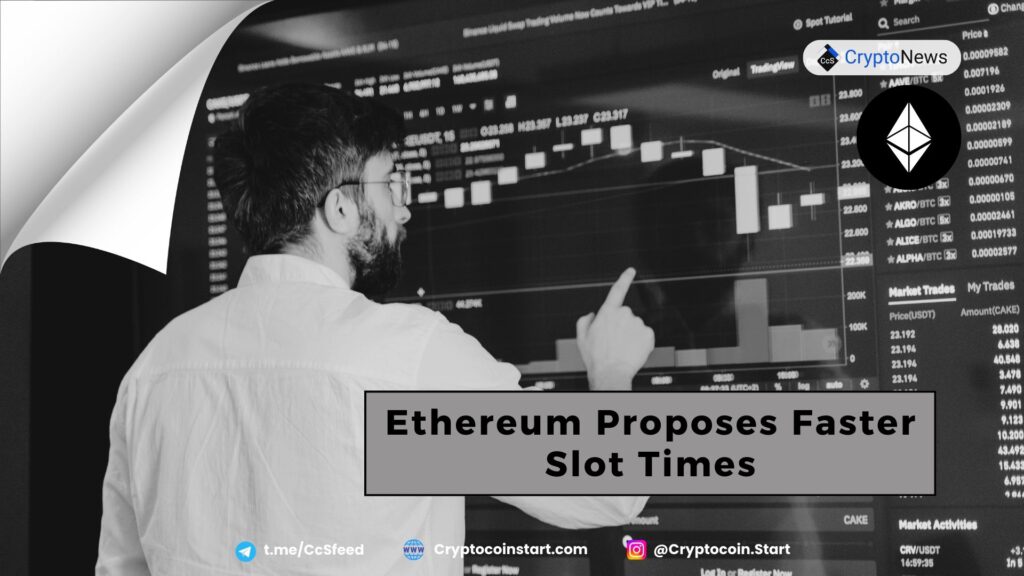
Overview of the Proposal
The Ethereum network may significantly enhance its throughput if a new proposal to reduce slot time is accepted. The proposal aims to decrease the current slot time from 12 seconds to 8 seconds, effectively reducing the number of ‘out of block’ transactions.
Impacts on Ethereum’s Efficiency
This change is expected to make Ethereum a more efficient blockchain, albeit with heavier requirements for node operators. The primary impact will be on boosting the speed of decentralized finance (DeFi) transactions, particularly complex decentralized exchange (DEX) trades that require intricate transaction routing.
Understanding Slot Time
Slot time is defined as the interval for proposing new blocks. Current block production occurs every 10-20 seconds, which sometimes leads to unfavorable overlaps in proposals. By shortening the slot time, Ethereum could enhance block production rates to align better with proposed transactions.
Reasons for the Proposed Change
The chief motivation behind this proposal is the increasing impact of Layer 2 (L2) solutions on Ethereum. While L2s have yet to reach Ethereum’s full capacity, signs of potential congestion and competition for block space are emerging. This proposal aims to replace previous suggestions for raising the gas limit or increasing the number of blobs, ultimately leading to similar throughput while fostering a faster L2 ecosystem.
Key Features of the Proposal
- Increase in blob count from 6 to 8 per block, providing L2s with more room to verify through blobs.
- Reduction of peak bandwidth requirements while increasing capacity with quicker overlaps between L2 proposals and block production.
Ethereum’s Future Speeds and Validator Considerations
The proposal has been posted on GitHub and has received endorsement from Ethereum Foundation researcher Justin Drake. Overall, the idea of accelerating Ethereum to enhance L2 scaling has garnered a generally favorable reception.
However, the primary constraint on Ethereum’s capacity remains the bandwidth of validators. While the number of validators is growing, this is putting some strain on the available nodes. The propagation of faster blocks could pose challenges, potentially leading some validators to unstake and withdraw from the network. Currently, 99.87% of validators successfully participate in block verification.
Smart Contracts and Adaptation Challenges
Another potential issue lies with smart contracts, as many are currently preset to accommodate a 12-second slot time. Yield farming protocols and similar contracts may require adjustments to adapt to the proposed faster block processing.
Blob Utilization and L2 Activity
Blob space is still available for L2s, with most activity remaining below the target of three blobs per block. Currently, the limit of six blobs per block is far from being fully utilized, with room for growth:
- Blob utilization has been evolving slowly, showing some signs of organic growth.
- Most recent activity spikes occurred in April, but empty blobs are still common.
- Increased capacity on Ethereum allows for new chains to hold their airdrop seasons, as many L2s are not fully launched yet.
Potential Issues and Market Implications
While Ethereum has achieved significant scaling through leading L2 chains like Arbitrum, Optimism, Base, and Linea, a faster Ethereum could lead to lower gas fees. However, there are concerns regarding faster ETH token production. Ethereum’s inflation has risen from 0.34% to 0.48%, primarily due to lower gas fees.
With higher inflation rates, Ethereum could add up to 1 million new tokens annually, putting additional selling pressure on the market. A quicker block schedule might accelerate the inflow of new ETH while maintaining a low burn rate.
Current Market Trends for ETH
In light of the new proposal, ETH has been trading within its range, currently sitting just under $2,500 at $2,453.30. The current market conditions appear disparate when compared to the network’s fundamental developments over the past two years. Despite facing competition, Ethereum continues to serve as the leading hub for DeFi and liquidity, offering the greatest source of value in the crypto landscape.

